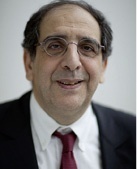Seeing sights on a stroll down StreetLab
Controllable indoor city street aids visual impairment studies
At a glance, StreetLab looks like a city street, peppered with shops and street signs. However, this special area belongs to the Paris-based Vision Institute.

Founded in 1992 by leading ophthalmologist Jose-Alain Sahel, today the institute employs 200 people and is one of Europe’s most advanced research centres for eye diseases.
According to the 2002 HID Survey (Handicap-Incapacities-Dependency) visual deficiency strikes 1.7 million people in France, among whom 60,000 are blind and 1,640,000 are partially-sighted. Considering demographic trends in more developed countries, the number of visually impaired people could double by 2030. Thus, to improve their future autonomy, security and comfort with the right technology, the indoor street is an important R&D laboratory to help in the conception, development and evaluation of innovative technology.
To analyse the behaviour of visually impaired patients, environmental parameters in the street – including the lighting, noise, outdoor urban items, experimental scenarios and information systems in the street – can be controlled by the researchers using sophisticated instruments. StreetLab is also rich in the number of objective measuring tools, such as biometric captors for movement analysis, eye trackers for analysis or gaze strategy, and infrared control cameras to record and monitor experiments.
Among the first StreetLab projects is a study on motricity and impaired vision conducted at the Institute by Dr Colas Autié and Prof. Avinoam Safran. This aims to identify the optimal paths of eye movement in severe pigmental retinopathies patients during tasks such as locomotion of visual localisation.
The research conclusion could lead to the development of rehabilitation protocols for pigmental retinopathies patients and increase their autonomy in daily activities.
‘StreetLab’s facilities innovate with realistic environments representing daily life situations during clinical tests, just like the Homelab* does for tasks performed in an apartment,’ Prof. Sahel told European Hospital during the street’s inauguration in December. Numerous recorders enable the team to gain a clear analysis of a patient’s behaviour in terms of body motion and eye movement. Thus we’ll understand better the reasons for a failure to do a certain task and measure the real therapeutic benefit for a visually deficient patient who is undergoing treatment.
‘StreetLab demonstrates,’ he added, ‘that innovation stems from research. We have managed to set up a spectacular system for scientists and industry partners while also involving the patient.’
All the institute’s facilities are managed by the Pierre et Marie Curie University of Paris, the Caisse des Dépôts, and the Fédération des Aveugles de France (Blind people associations). Support is received from the Paris City, the Région Ile de France and the Ministry of Education and Research.
* Other innovative facilities in the Handicap Department at the Vision Institute, include Homelab, which helps industrial partners to be aware of how to improve the living environment of visually impaired people.
Profile:
José-Alain Sahel is director of the Vision Institute, a translational research centre in Paris, and Professor of Ophthalmology at Pierre and Marie Curie University, as well as for Biomedical Sciences (Cumberlege Chair) at University College London. The major focus of his clinical research is to develop treatments for currently untreatable retinal diseases, such as retinitis pigmentosa, age-related macular degeneration and vascular eye disease, by resorting to pharmacological treatments, gene therapy and stem cell therapy.
03.07.2014







